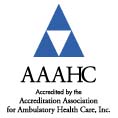Any women can get breast cancer. Breast cancer now causes more deaths among women than any other cancer except lung cancer. Many breast cancers can now be treated successfully, but the changes for success in treatment are highest when the cancer is detected early.
Breast cancer can occur at any age, but it is more likely to occur after age 40 and older. Some women have a greater probability of having breast cancer than others. Women with a personal history of breast cancer, and women with a family history of breast cancer (such as cancer in a mother, sister, or a daughter at a young age, or having several close relatives with breast or ovarian cancer) may have a greater chance of having breast cancer.
Your Best Defense - a Personal Action Plan
|
20 - 39 years old: 1. Have a clinical breast exam as a part of your periodic health exam, preferably at least every three years. 2. Report any changes in your breasts to your doctor right away. Breast self-exam is an option for finding changes. If you are at increased risk for breast cancer (family history, past breast cancer, etc.) talk with your doctor about the benefits and limitations of starting testing earlier, having additional tests, or having more frequent exams. 40 and older : 1. Have a yearly mammogram and continue for as long as you are in good health. 2. A clinical breast exam as a part of a periodic health exam, preferably at least every year. 3. Report any breast change to your doctor right away. Breast self-exam is an option for finding changes. |
Mammograms
The most important part of your action plan is having regular mammograms. These simple breast x-rays are quick easy, and safe. In fact, mammograms use less radiation than a dentist's x-ray. A mammogram can give you a big head start on treatment. You and your doctor may not feel a lump until it is the size of a pea, but a mammogram can find cancers when they are very small, often several years before a lump or change can be felt.
The American Cancer Society advises you to have yearly mammograms beginning at age 40.
As you grow older, your chances of having breast cancer will increase. Almost half of all breast cancer occurs in women 65 and older; more than three-quarters of them occur in women 50 and older. For guidelines on getting an accurate, high-quality mammogram, call this toll-free number: 1-800-ACS-2345.
Clinical Breast Exam
You will need to see your doctor or nurse for a clinical breast exam. All women in their 20s and 30s should have a breast exam as part of their regular health checkups at least every three years. After the age of 40, have a breast exam every year.
Every breast exam by your doctor or nurse should include:
- Taking a personal health history, including asking about any breast changes or problems, and taking a family history, and asking about family members who have had breast cancer.
- Looking at your breasts while you are standing in front of a mirror with your hands pressing down on your hips.
- Examining the entire breast, up to the neck, into the armpit, over to the center of the chest, and to the bottom or the rib cage.
- Examining the breast using a vertical strip (up and down) pattern to make sure that no breast tissue is missed.
- Using different amounts of pressure to examine the breast (light, medium and deep).
- Discussing your breast health plan with you and showing you the proper way to examine your own breasts.
A thorough clinical breast exam can take up to 10 minutes. Talk to your doctor if you feel that your exam was incomplete or rushed.
Breast Awareness
You should become familiar with how your breasts normally look and feel so that if changes occur, you can report them to your doctor right away. You may choose to become familiar with your breasts by doing breast self-exams - checking for lumps, thickness, or other changes.
Ask your doctor or nurse to show you how to do the exam correctly. As a reminder, if you do breast self-exams, you should check each breast all over and include the armpit. Use your finger pads and move them in a small circular motion using different amounts of pressure (light, medium, and deep) to feel the entire breast. Look at your breasts in front of a mirror to check for any changes in how your breasts look or for dimpling of the skin.
Plan to examine your breasts at the same time every month. It does not take long, and you will know that you have done your part until your next doctor's exam and mammogram.
If you think you have found a lump or change, see your doctor. Most breast lumps are not cancer, but you will not know if you do not ask.
Begin your action plan now. We still do not know how to prevent cancer, but we do know how to find it early, when the chance of successful treatment is greatest.

We are accredited by Accreditation Association for
Ambulatory Health Care (AAAHC)

